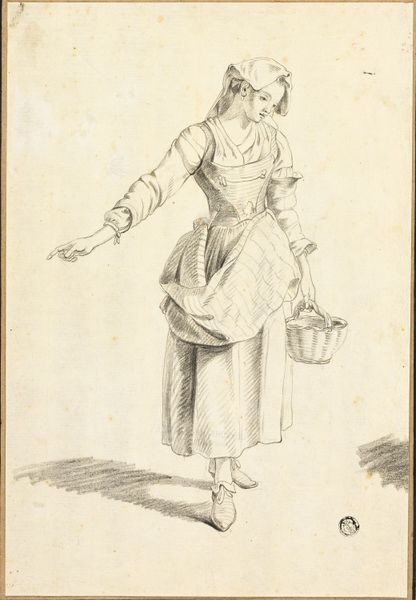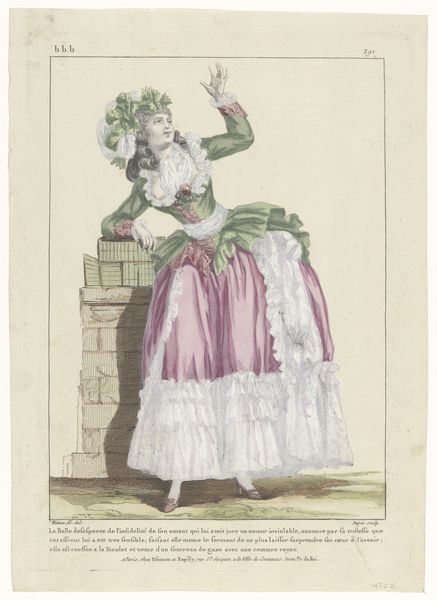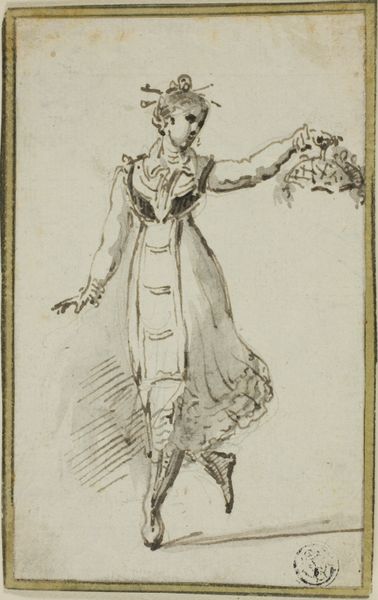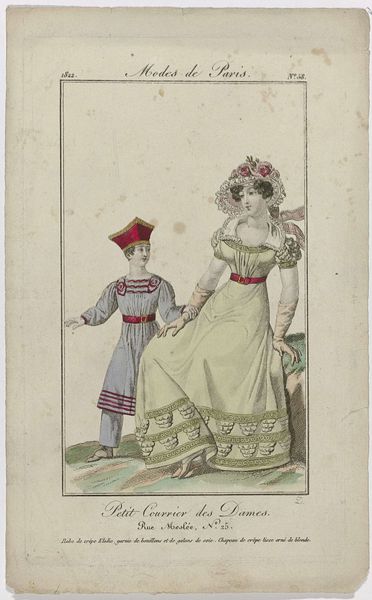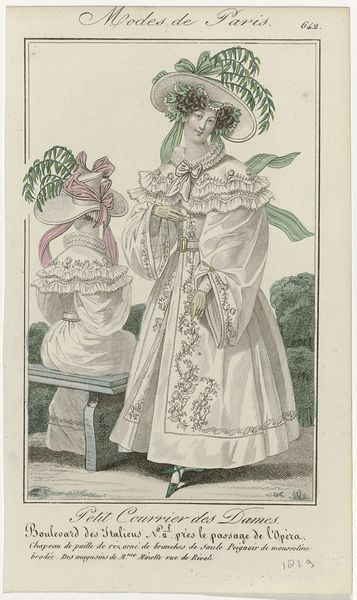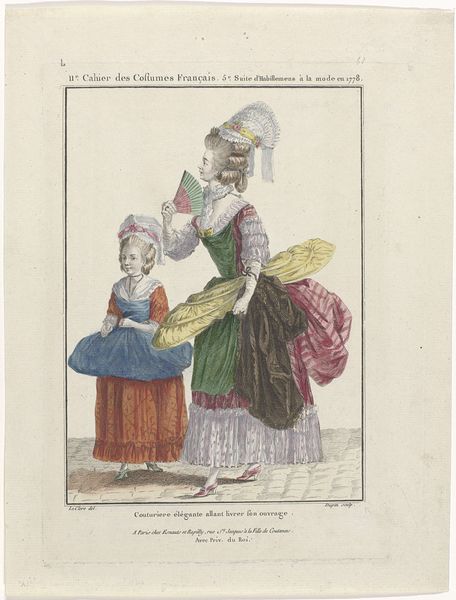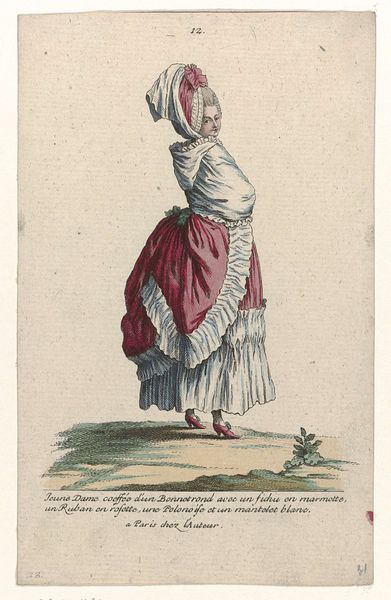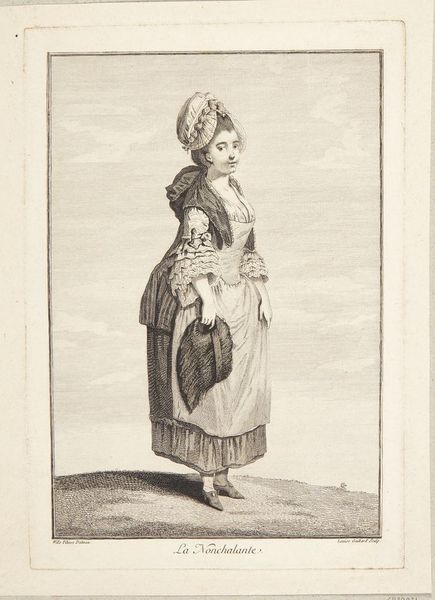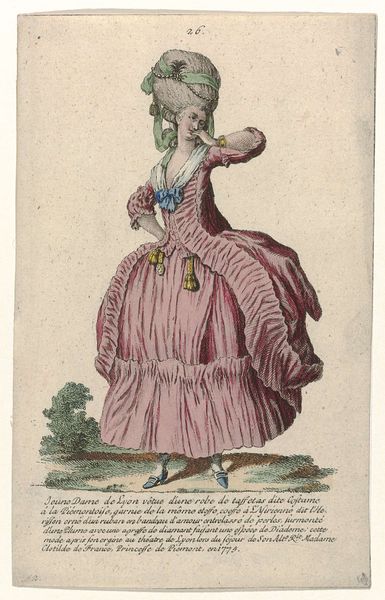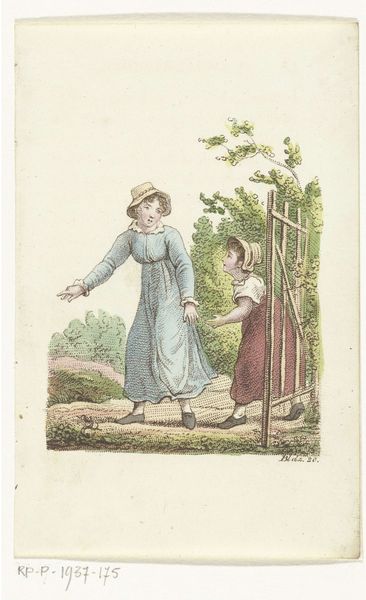
Dimensions: height 265 mm, width 170 mm
Copyright: Rijks Museum: Open Domain
Curator: Well, hello there. We're standing before a delicate etching titled "Jonge vrouw met een bos bloemen", which translates to "Young woman with a bunch of flowers," created somewhere between 1695 and 1697 by Pieter van den Berge. It's a print on paper, currently residing here at the Rijksmuseum. What's your initial feeling gazing upon this artwork? Editor: It feels like a half-remembered dream of spring! The colors are muted, the lines are soft…almost faded. The girl…or woman, really…looks like she's stepped out of a folk song. There's a wistful melancholy about her stance, despite holding those flowers. Curator: Indeed. Van den Berge masterfully evokes a sense of nostalgia, doesn’t he? The scene is rich with symbolic language. The woman, possibly allegorical of Spring, offering flowers, perhaps as symbolic representation of fertility, youth and renewal.. Note also the inclusion of the somewhat awkward boy who reaches for her skirt. It's a playful, though slightly unsettling, inclusion. Editor: Unsettling is the word! The flowers feel less celebratory and more like an offering or perhaps a lament. Think of the pre-Raphaelites; this girl feels like one of those Ophelia-like figures teetering on the edge. Also the child! Dressed very formally in clothing clearly not his, which to my modern eyes gives an uncomfortable visual, almost sinister, feeling. The garland that she wears could be seen as celebratory or funereal. There's clearly no real feeling of freedom on her face; there is little carefree joy in this 'spring'. Curator: Precisely. There's an inherent tension in the depiction of the girl; a strange combination of genre-painting with hints of romanticism, if one were to loosely define style, it captures a certain fragility. The background buildings lend some sort of story narrative here too; we have the well-to-do on the bridge while our model has an altogether different kind of background, which makes it so charming. It is an artwork that acknowledges beauty, whilst simultaneously suggesting something darker beneath the surface. Editor: Absolutely. Perhaps it's a meditation on the ephemeral nature of spring itself. Beauty and joy are fleeting, inevitably giving way to the darker seasons, the melancholy of autumn. Curator: Well, I think this work speaks beautifully to the complexities of life, that it encompasses sadness and joy as the light returns; an allegorical symbol in art of something more profoundly understood by the iconographers. Editor: It really does offer so many interpretations. I’m leaving with more questions than I arrived with. Isn't that wonderful?
Comments
No comments
Be the first to comment and join the conversation on the ultimate creative platform.

